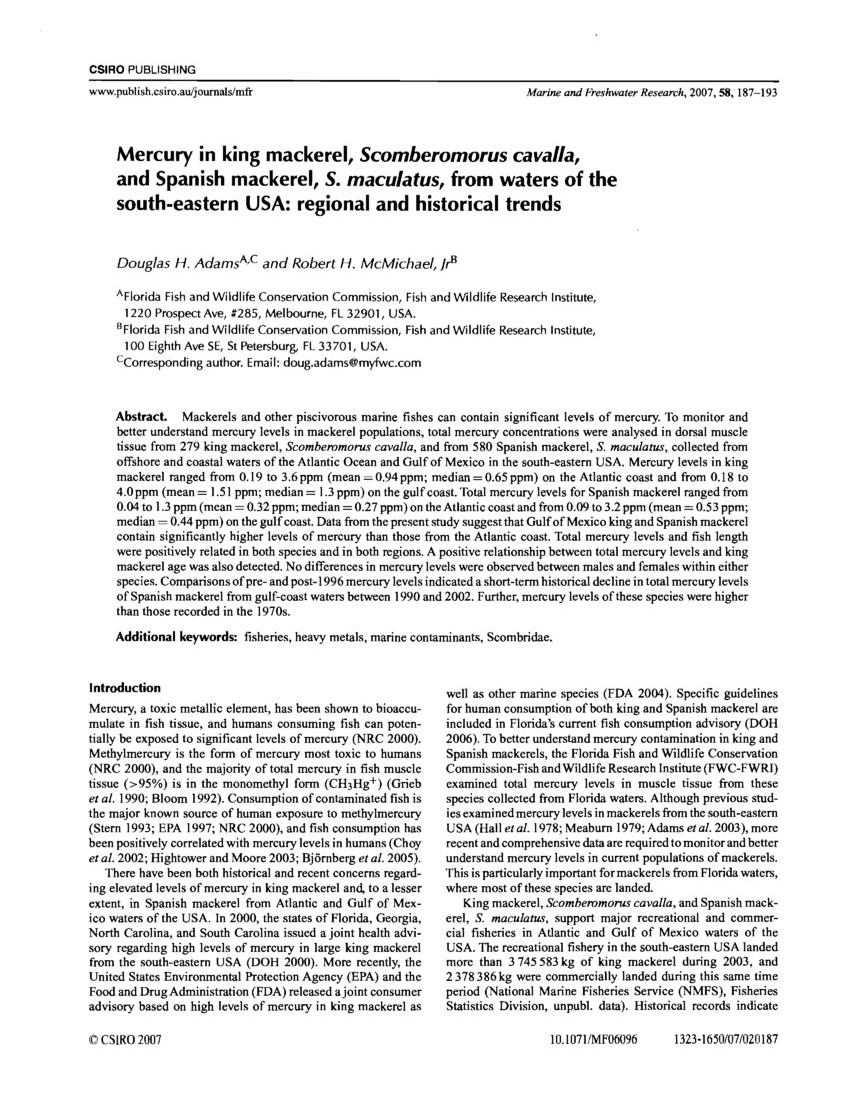Journal Article
AccessMercury in King Mackerel, Scomberomorus cavalla, and Spanish Mackerel, S. maculatus, From Waters of the South-eastern USA: Regional and Historical Trends
Mackerels and other piscivorous marine fishes can contain significant levels of mercury. To monitor and better understand mercury levels in mackerel populations, total mercury concentrations were analysed in dorsal muscle tissue from 279 king mackerel, Scombemmorus cavalla, and from 580 Spanish mackerel, S. maculatus, collected from offshore and coastal waters of the Atlantic Ocean and Gulf of Mexico in the south-eastem USA. Mercury levels in king mackerel ranged from 0.19 to 3.6ppm (mean = 0.94ppm; median = 0.65 ppm) on the Atlantic coast and from 0.1 8 to 4.0ppm (mean = 1.51 ppm; median = 1.3 ppm) on the gulf coast. Total mercury levels for Spanish mackerel ranged from 0.04 to 1.3 pprn (mean = 0.32 ppm; median = 0.27 ppm) on the Atlantic coast and from 0.09 to 3.2 pprn (mean = 0.53 ppm; median = 0.44 ppm) on the gulf coast. Data from the present study suggest that Gulf of Mexico king and Spanish mackerel contain significantly higher levels of mercury than those from the Atlantic coast. Total mercury levels and fish length were positively related in both species and in both regions. A positive relationship between total mercury levels and king mackerel age was also detected. No differences in mercury levels were observed between males and females within either species. Comparisons of pre- and post-1 996 mercury levels indicated a short-term historical decline in total mercury levels of Spanish mackerel from gulf-coast waters between 1990 and 2002. Further, mercury levels of these species were higher than those recorded in the 1970s.
Publisher - Commonwealth Scientific and Industrial Research Organisation (CSIRO)
Subjects - Fish, King Mackerel; Fish, Spanish Mackerel; Chemical, Mercury
Citation: Adams DH, McMichael Jr RH. 2007. Mercury in King Mackerel, Scomberomorus cavalla, and Spanish Mackerel, S. maculatus, From Waters of the South-eastern USA: Regional and Historical Trends. Mar. Freshw. Res.; 58(2):187-193 http://dx.doi.org/10.1071/MF06096
